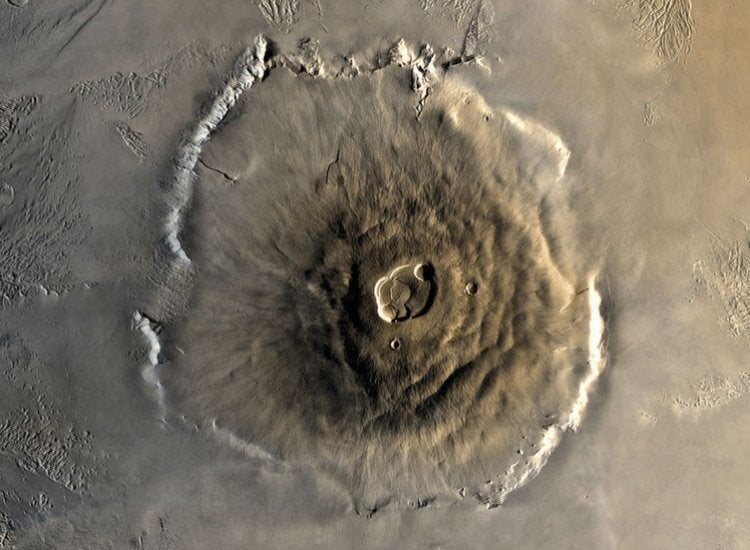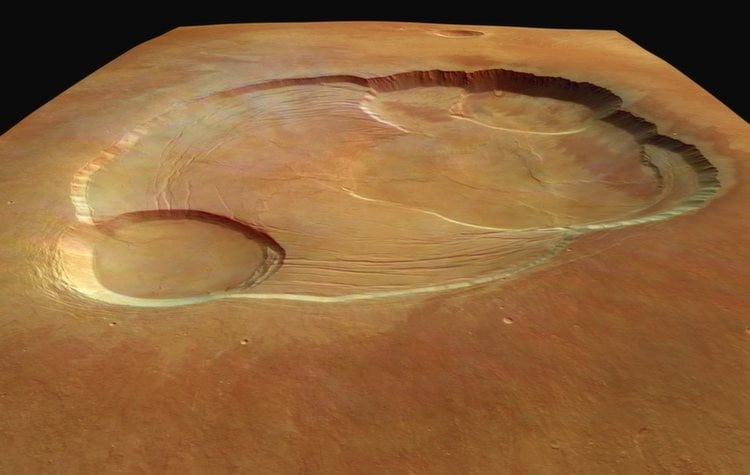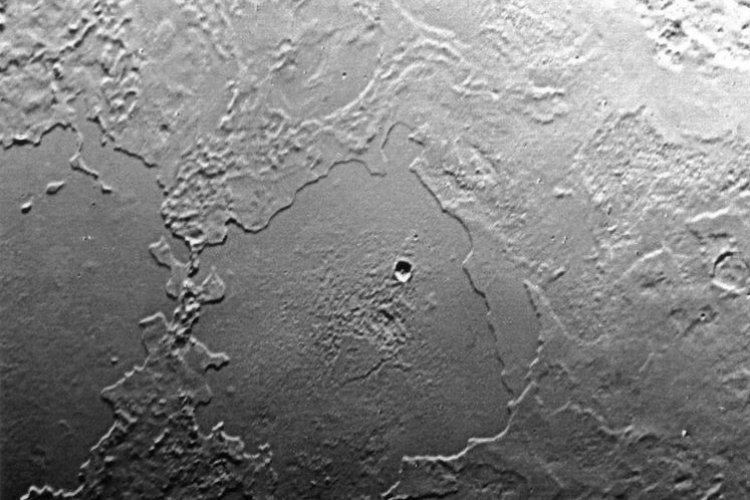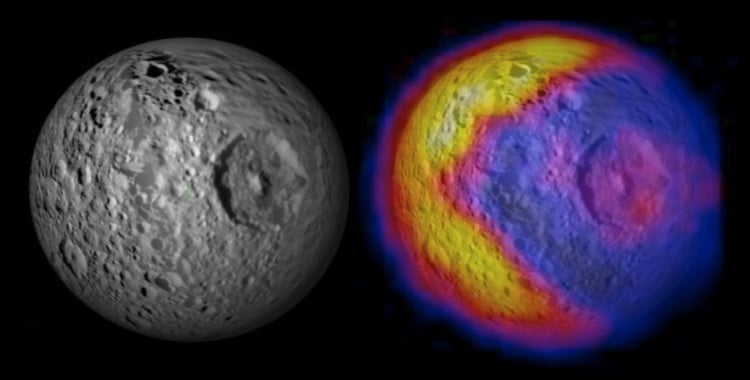There are so many fascinating things in the universe and we don’t even have to travel too far to see them.
Even though astronomy is one of our oldest sciences, our understanding of the universe is still in its infancy. There are so many fascinating things in the universe and we don’t even have to travel too far to see them. Many of them are right here in our very own solar system.
Olympus Mons

Actual NASA image taken by Viking 1. Source: Wikipedia
For a long time, we considered Olympus Mons, located on Mars, to be the tallest mountain in our solar system. At a height of 14 miles, it is almost three times as tall as Mount Everest, the highest point on our planet.
Now we know that there is actually a slightly taller mountain in our solar system. It is called Rheasilvia and it is located on an asteroid named Vesta. Even so, Olympus Mons remains far more impressive. Although Rheasilvia is a little taller, the mountain on Mars is simply gigantic in scope.

Massive crater located right at the center of the mountain. Source: European Space Agency
Looking at a picture of it, it is hard to imagine that Mons is incredibly tall because it is also extremely wide. The landform has a low profile as is typical of a shield volcano. This makes the mountain’s average slope no higher than 5 degrees. Olympus Mons covers an area of 114,000 square miles, which is about the size of Arizona.
Cryovolcanoes

NASA image of Triton taken by Voyager 2 gives us our first look at a cryovolcano. Source: Wikimedia Commons
Cryovolcanoes are incredibly cool (no pun intended) types of volcanoes that shoot ice into the atmosphere instead of molten rock. More specifically, they shoot a mixture of water, methane and ammonia when they erupt (called cryomagma), but the mixture is quickly turned into a solid, as it is immediately exposed to low temperatures.
Unfortunately, there are no cryovolcanoes for us to admire on Earth. It is thought that they can only be formed on low-temperature celestial bodies such as icy moons. We first encountered them in 1989 when Voyager 2 was passing Neptune. Cryovolcanos were spotted on one of its moons, Triton.

Cassini image of cryovolcanoes erupting on Enceladus. Source: Wikipedia
Much later, in 2005, the Cassini probe took some excellent photographs of cryovolcanoes on Enceladus, a moon of Saturn. Since then it has been discovered that cryovolcanic activity is not than uncommon. It has been detected on other moons such as Europa, Ganymede and Titan.
The Great Red Spot

NASA image clearly showing the Great Red Spot. Source: Jodrell Bank
The Great Red Spot is among the most well-known points of interest in the solar system. Thanks to its massive size, this giant storm on Jupiter is clearly noticeable in any image of the planet. How big is it? Imagine the size of Earth and multiply it by two or three.
We have known about the storm for a long time, ever since the 17th century. Thanks to this extended period of observation, we’ve also noticed that the spot is shrinking substantially. Just over the last century alone, the Great Red Spot’s diameter shrunk to about half its size. At its peak, the spot was about 25,000 miles wide. Today, though, the Great Red Spot expands around 15,000 miles in width.

Great Red Spot and Oval BA – Best Friends Forever. Source: Wikipedia
The Great Red Spot has another very similar storm to keep it company, although this one is much smaller (it’s still bigger than our planet, though). This storm’s official name is Oval BA, but its similarity to the Great Red Spot earned it the nicknames Little Red Spot or Red Spot Jr.
Mimas

That’s no moon Source: Physik Blog
On its own, Mimas is a rather unremarkable little moon orbiting Saturn. We have known about it for a long time – it was discovered by William Herschel in 1789. Up until relatively recently, the most significant aspect of Mimas was the fact that it is the smallest body in our solar system which still has enough gravitational force to take a round shape. However, a few decades ago a certain movie came out about wars in space and featured a certain Death Star. All of a sudden, astronomers realized they had seen something similar before.
It’s true. From a certain angle, Mimas looks exactly like the Death Star. Of course, this isn’t incredibly hard to realize since the Death Star is basically just a sphere with a giant crater. What is most impressive is the fact that it’s all a giant coincidence. Although we discovered Mimas hundreds of years ago, the crater itself (later named Herschel) wasn’t discovered until three years after Star Wars came out.

Temperature map of Mimas. Source: Pacman
The coincidences don’t end there, though. A few years ago, Cassini took a temperature map of Mimas and it is again reminiscent of an iconic pop culture figure. This time it’s famed video game character Pac-Man. The crater is even placed perfectly to resemble a power pellet.





